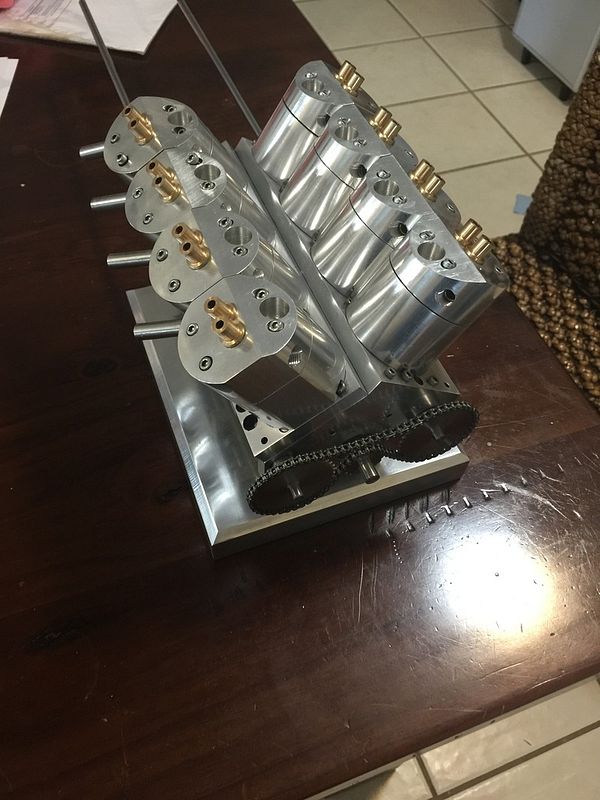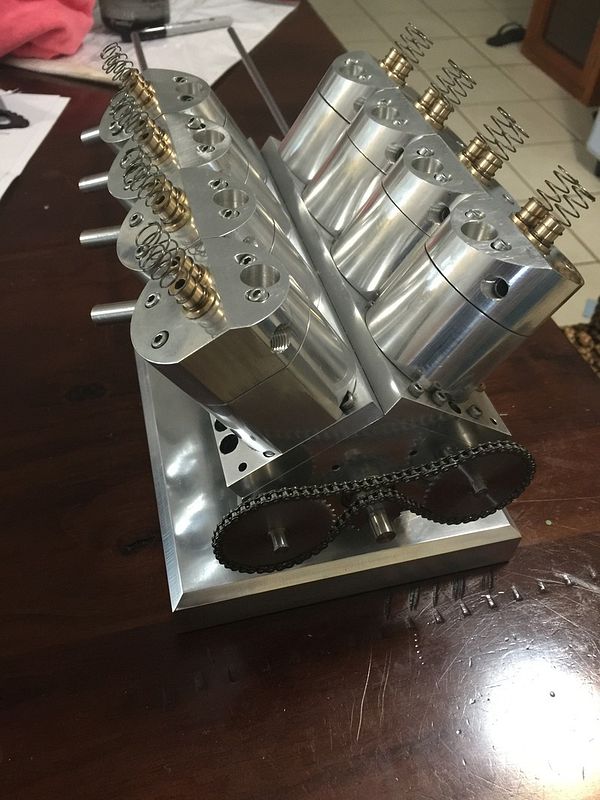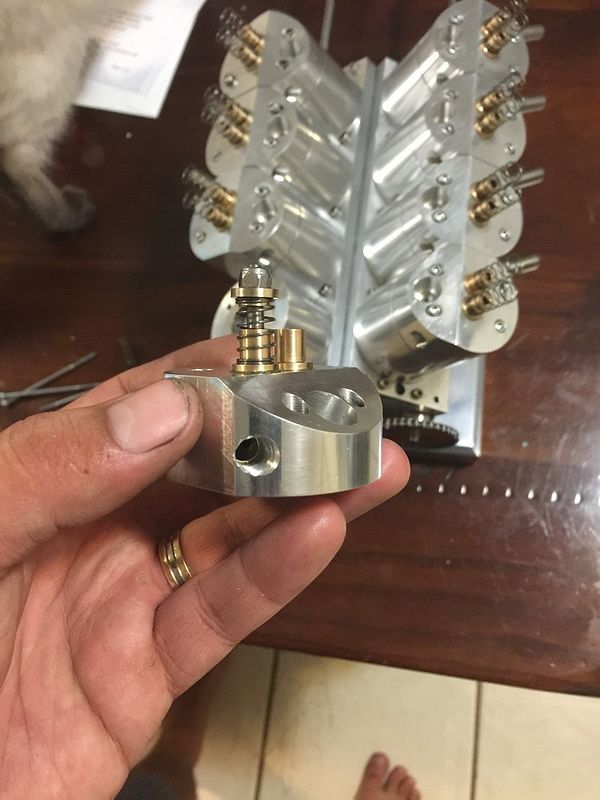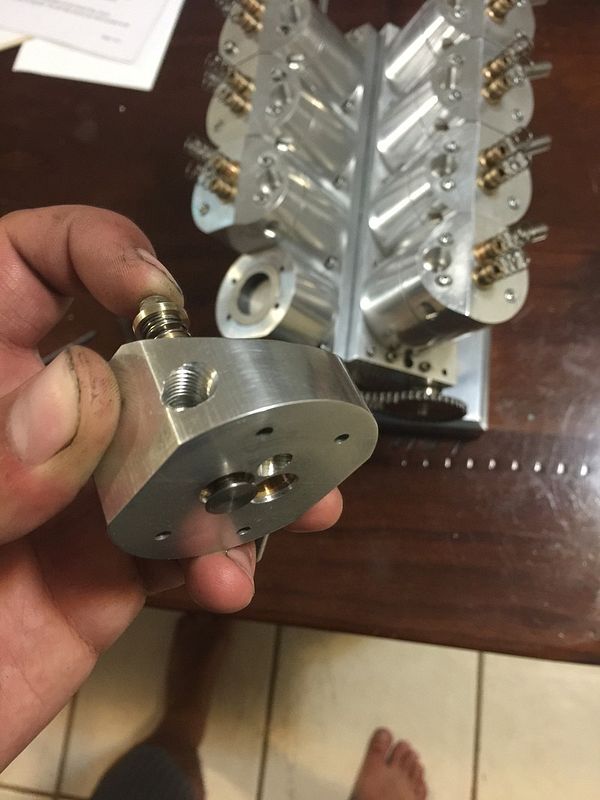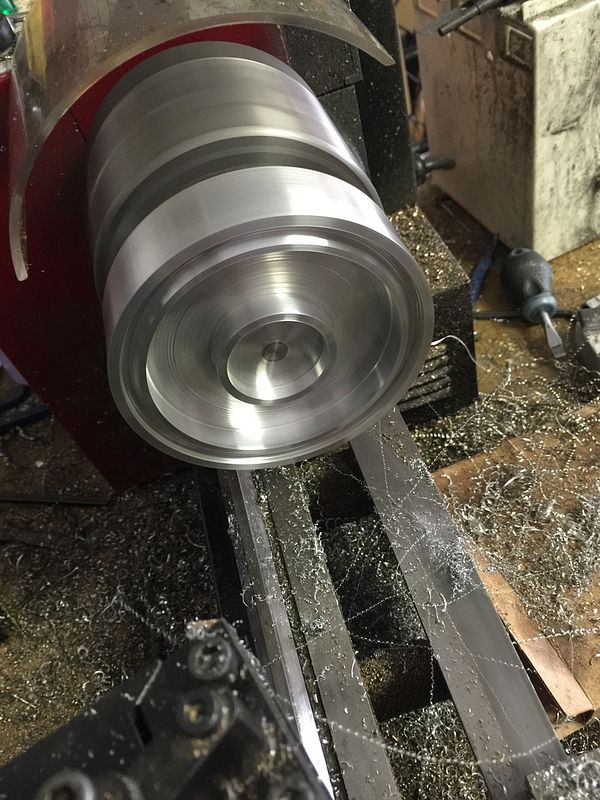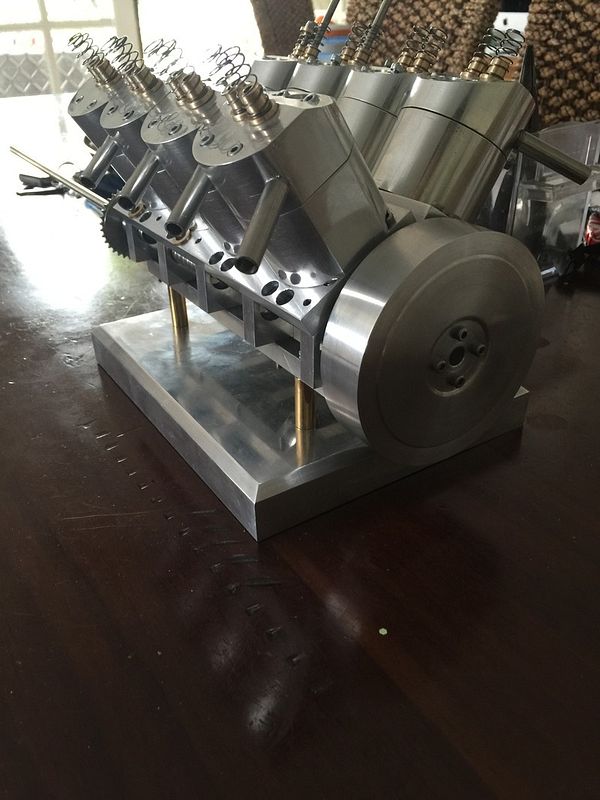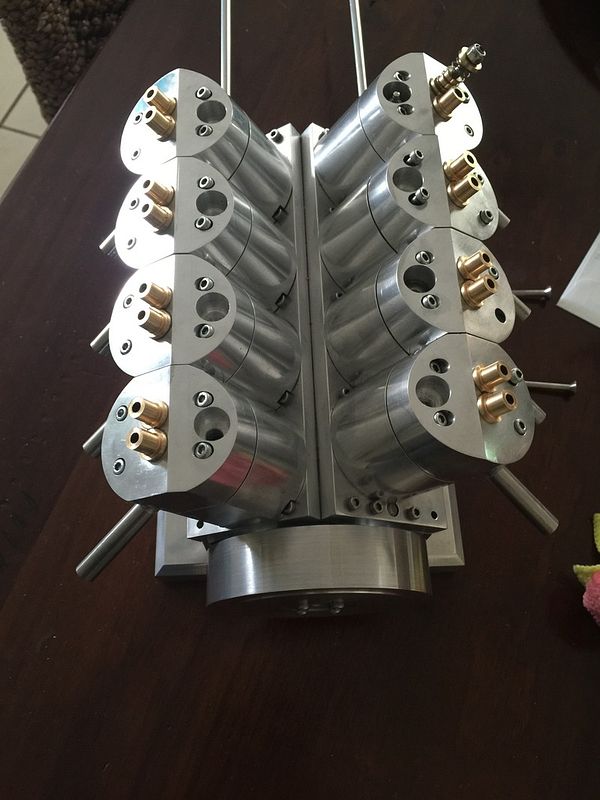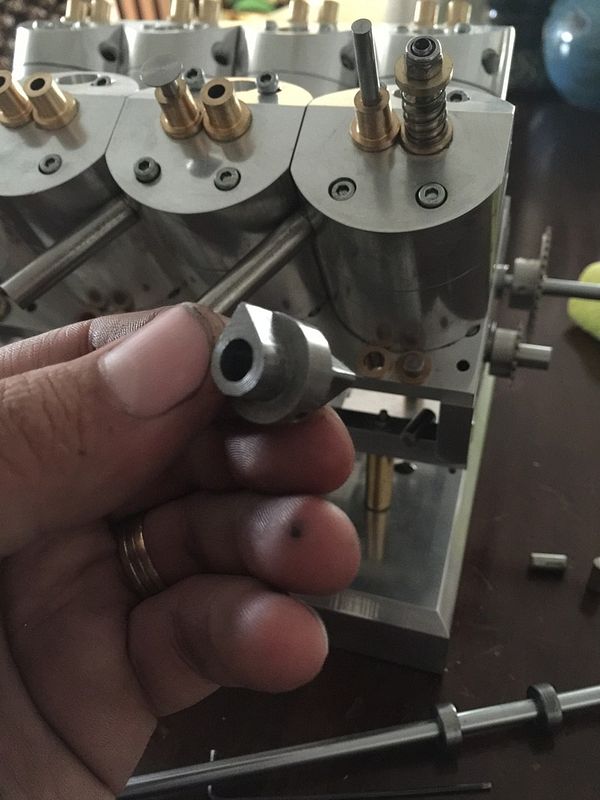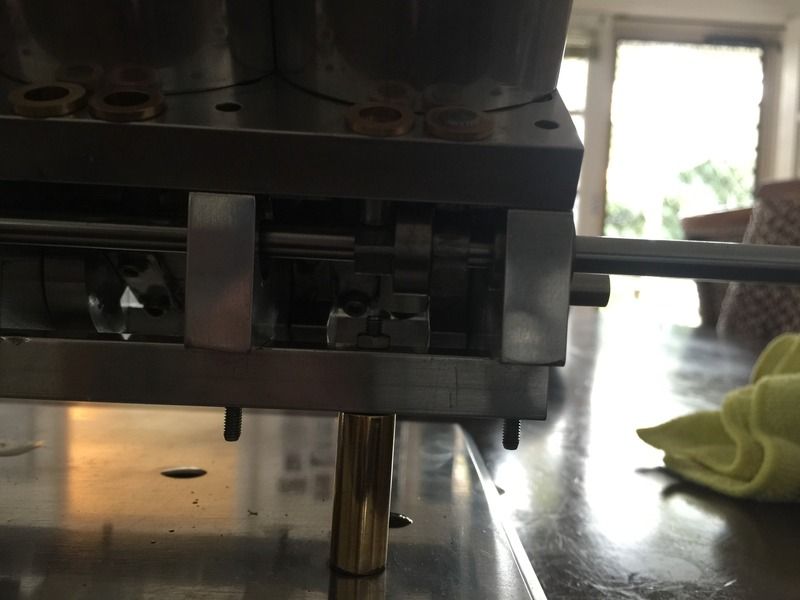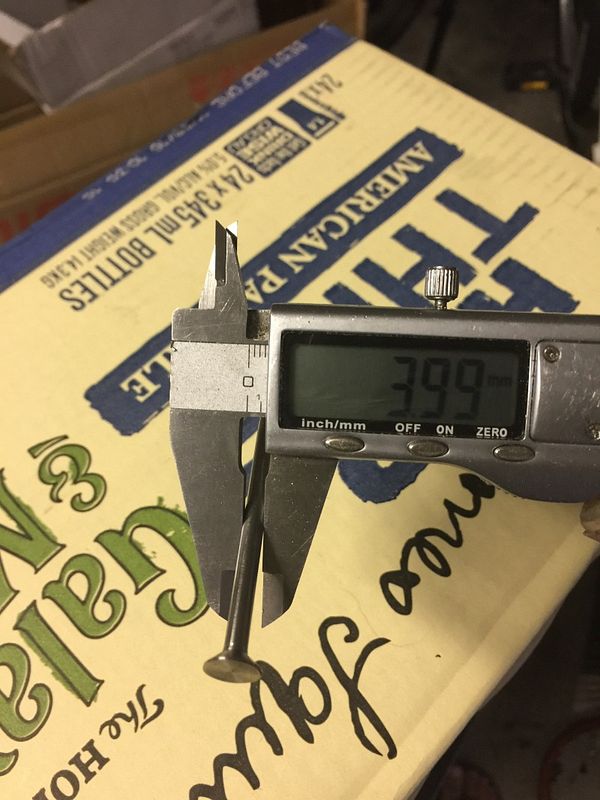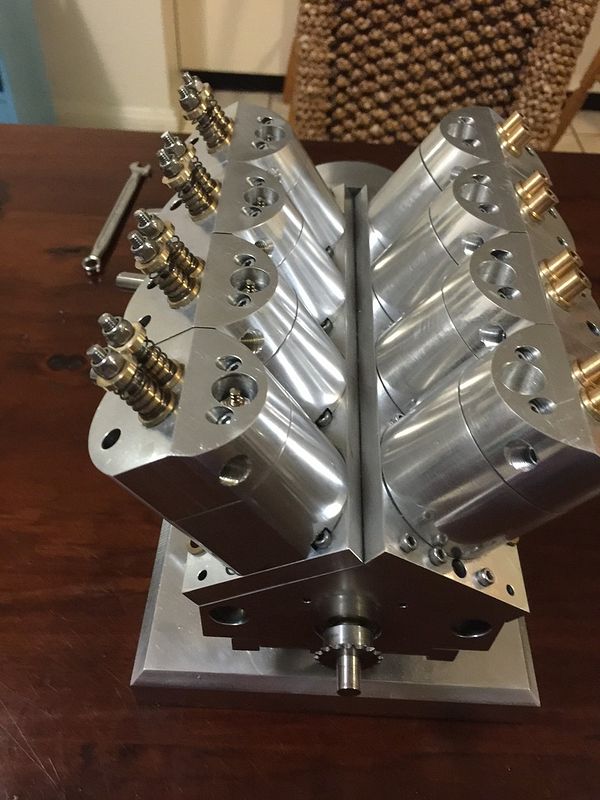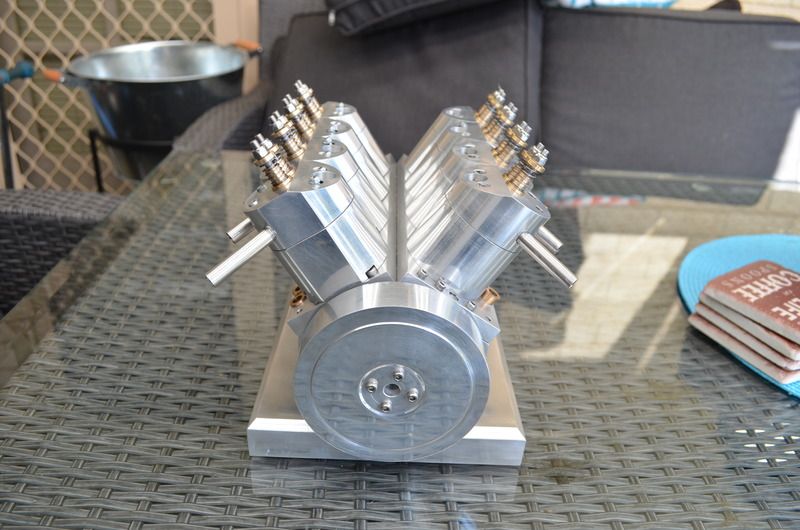- Joined
- Jun 24, 2010
- Messages
- 2,361
- Reaction score
- 932
Had issues with making valves today. The stainless just wanted to flex too much, even if I used a live center on the end. Was ending up with uneven thicknesses across the stem.
I set the compound slide on the lathe to 40 degrees and cut the valve seat. Would I be correct in simply setting it to 40 degrees to cut the opposite angle for the actual valve? Or will this angle be 50 degrees? I
re valve alloy, I ended up trying 416 based on machinability charts like this. I needed to buy material anyway so figured try & stack the deck in my favor. I also tried (I think) 303, didn't seem radically different at least for this part & my tooling/technique. Shades of crappy
https://www.google.ca/search?q=machinability+comparison+stainless&biw=1642&bih=999&tbm=isch&tbo=u&source=univ&sa=X&ved=0ahUKEwiA9vzxvqfKAhVMxGMKHQDZCb8QsAQIOQ#imgrc=SgqDPfJRlrWs0M%3A
Re finishing, I worked my ~ 0.004" roughish turned finish down with hard backed emory paper sticks & miked along the stem until it was in the sizing range for homebrew lap post #9. My tool worked quite well but of course the tailstock support chunk must be removed to slide the lap on.
http://www.homemodelenginemachinist.com/showthread.php?t=24516
I like the looks of this self made mini clamp hone. Its on my list of tools to make & try. My thought is make it say 50-75% the valve stem length so I can traverse & correct any diameter changes? http://philsradial.blogspot.ca/2012/02/valves.html
ps- I'm a rookie, just stumbling behind what I respectfully steal l from others. Check out Terry's radial build posts in particular. There are other good ones too, just that comes to mind immediately on valve stuff.
re seat angle, I think the common mode is to strive for cage/valve face equal angles but a proper & very thin contact line for seal. How this is achieved is documented in other builds,or others can chime in. FWIW I measured a commercial RC 4S engine at 0.015-0.020" chamfer on the valve cup as I recall.





